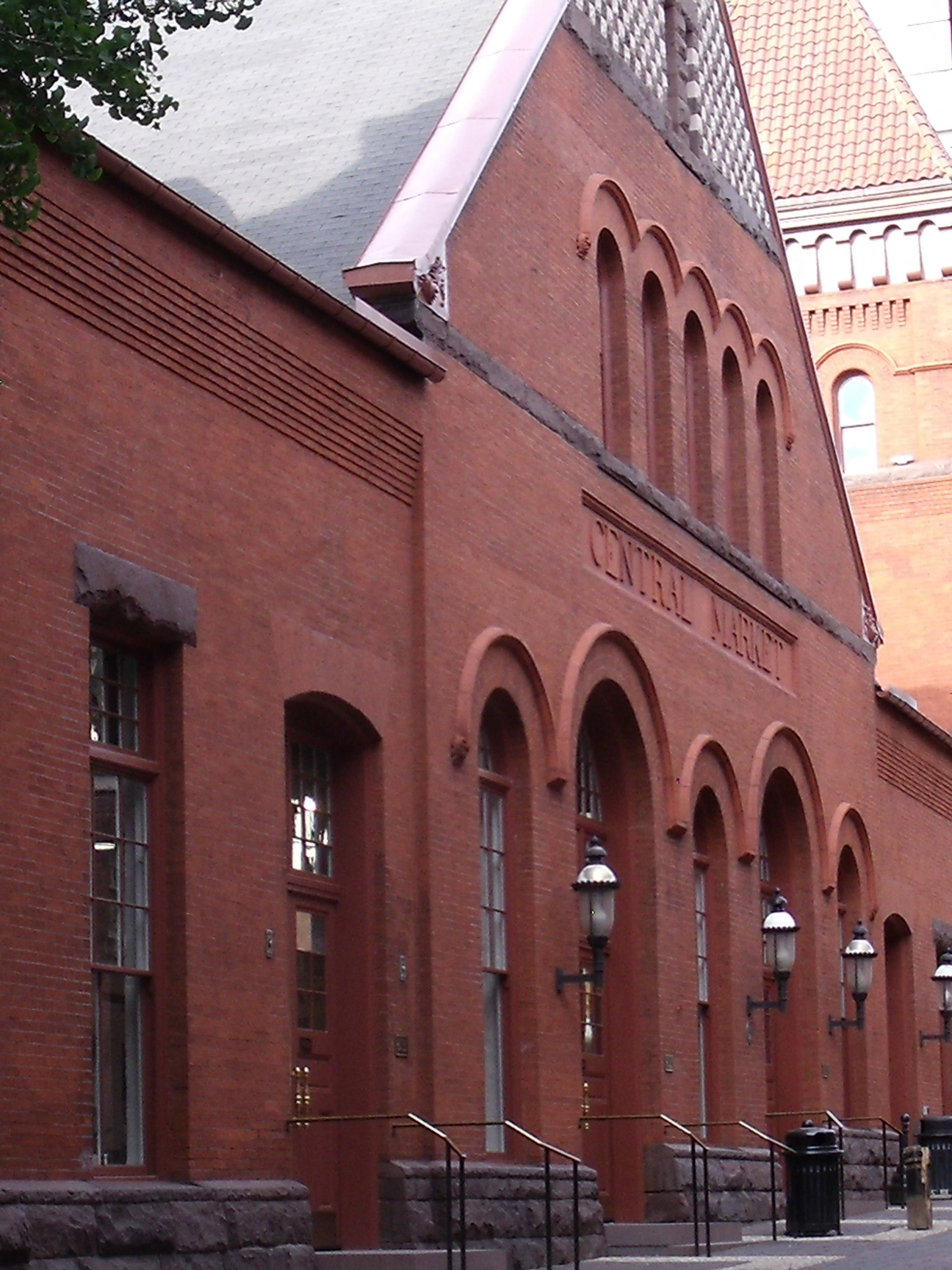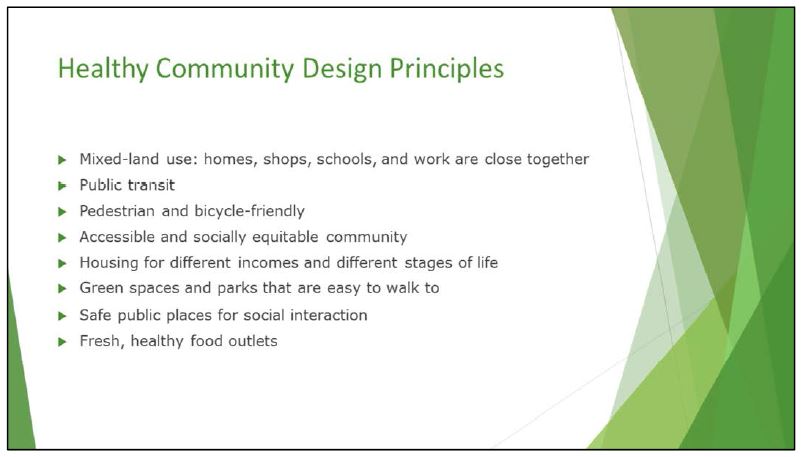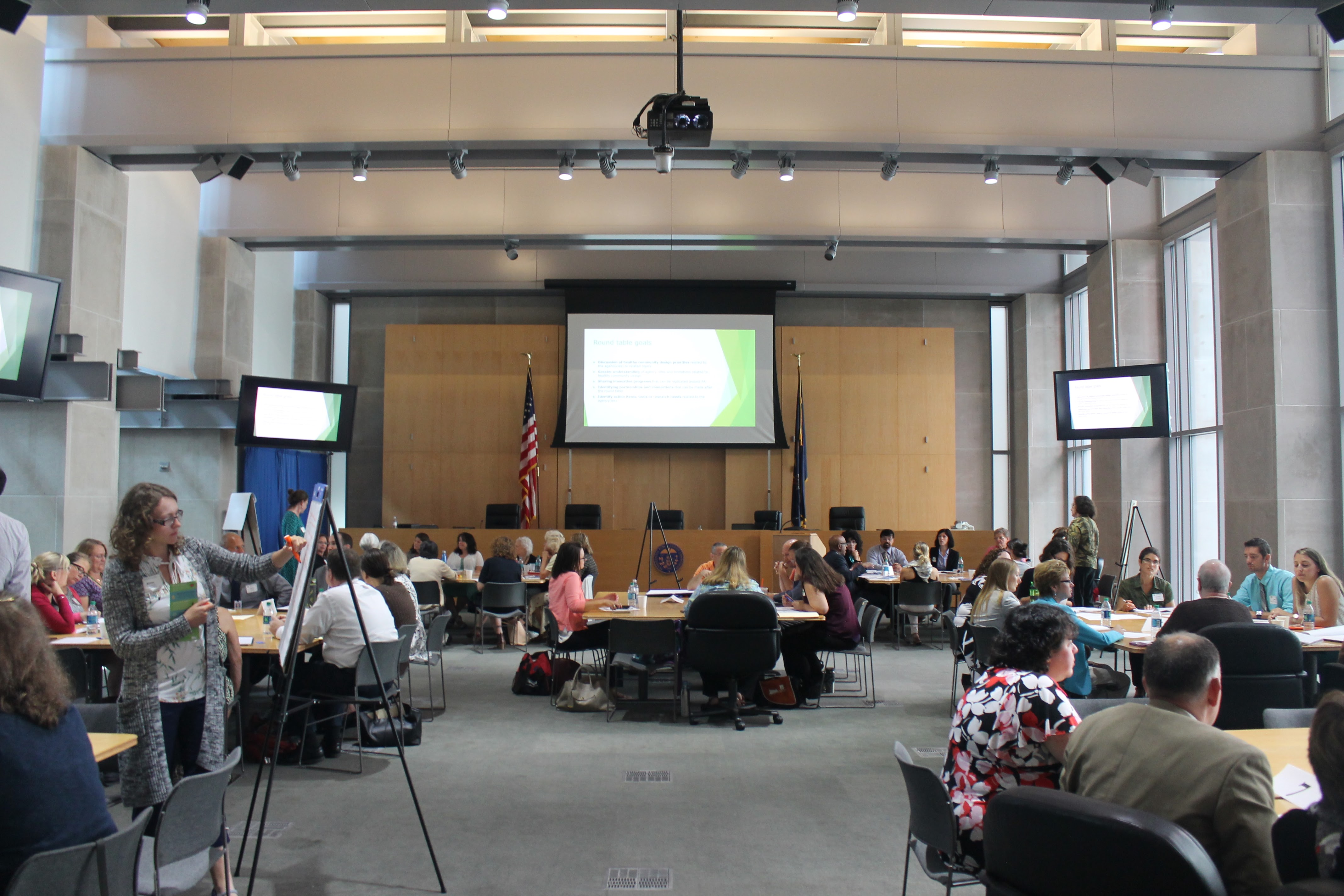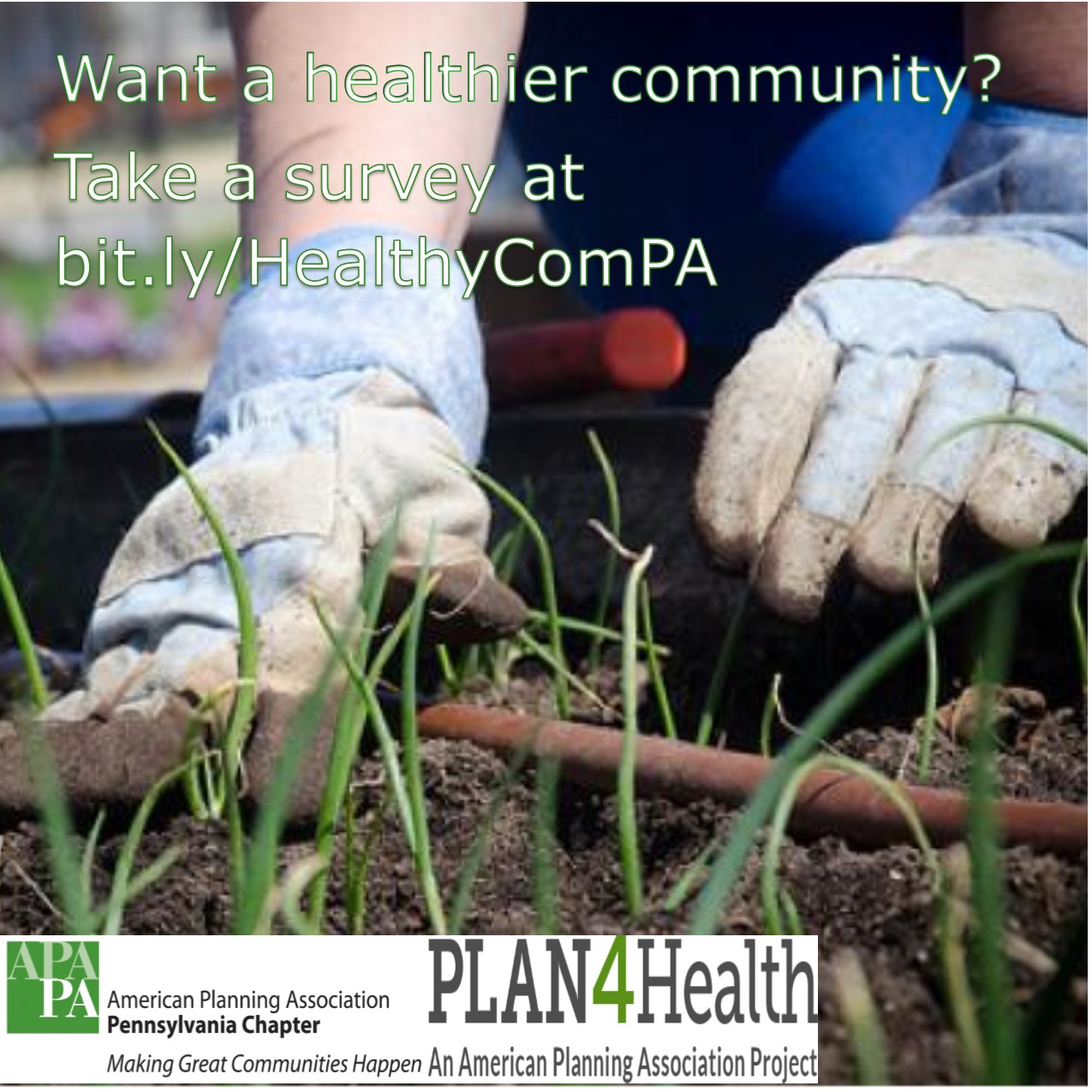About a month or so ago, I was checking my APA PA news feed at lunch one day and saw a post about taking a survey about how “healthy” my community is. I always try to take surveys like this – because they are important and matter and because I know how hard it can be to get people to participate in these kinds of things.Before taking it, though, I thought I had better check out this Healthy Communities in PA thing.
In a nutshell, its about Healthy Community Design. Community design!? That’s right up the PA SHPO’s alley so I wanted to know more.
According to the U.S. Centers for Disease Control and Prevention (CDC),
“Healthy community design is about planning and designing communities to make it easier for people to live healthy lives. Healthy community design encourages mixed land uses to bring people closer to the places where they live, work, worship, and play. Doing so reduces dependence on cars and provides affordable housing, good bicycle and pedestrian infrastructure, space for social gathering, and access to transit, parks, and healthy foods.”

Lancaster’s Central Market has been providing fresh food for their healthy community for decades.
The group behind the survey I was about to take was the Healthy Communities in PA Task Force. Created with the assistance of a CDC Partnerships in Community Health Planners4Health grant from the national American Planning Association (APA), the Task Force combines the expertise of health and planning professionals to discuss the best ways to encourage healthy communities design implementation in Pennsylvania.

The connection between community design and health.
Immediately, my brain started making connections between what we do at the PA SHPO, the huge number of historic communities in Pennsylvania, and what role historic preservation already plays in this idea of healthy community design. I got excited about the opportunity to talk with people we don’t ever really get to talk to about how historic preservation is relevant to their work.
I took the survey, answering for my own community, and at the end saw my opening. There was the ubiquitous “What else would you like to tell us?” question.
So, I wrote about the existing (but not necessarily obvious) healthy community design that can be found in most communities throughout Pennsylvania. Traditional small towns and small cities – like you’d find in most Pennsylvania communities founded in the 18th, 19th, and early 20th centuries – are inherently walkable communities with pedestrian-friendly infrastructure and open space to support people living, working, and gathering in one place. After all, most of them were established before “automobile” became a household word!

How many of these design principles are also found in historic communities?
The National Trust for Historic Preservation is thinking about this connection, too. The upcoming PastForward2017 conference in Chicago will have a track on health and preservation. Some of this track focuses on the research that is just getting started about the field of environmental psychology, specifically the mental and psychological impacts of old places, and how people perceive and respond to place.
Elizabeth Hartig from the Plan4Health program of the American Planning Association will moderate a session that explores the physical health connections associated with older and historic places and spaces, looking not only at community amenities but also some of the potential negative health aspects of older places. They’ll end with some tools for actually putting all this information to work.
I, for one, will be interested to hear what comes out of this track and to share it with my Healthy Community Design colleagues. I had a chance to talk with many folks about some of this at a recent Roundtable workshop related to Healthy Community Design. It as an eye-opening day and I left feeling more positive than ever that preservation can help achieve some of the Healthy Community initiative’s goals.

Fellow Healthy Communities Roundtable attendees.
In many older towns and cities throughout Pennsylvania, the physical characteristics for healthy community design still exist. Older and/or historic places and spaces that once connected a community emotionally and physically- they housed families, businesses, factories, offices, public services, students, and more – are waiting to be restored, revived, or rehabilitated to help create the Healthy Community for the 21st century.
~~~~~~~

Would you describe your town as a healthy community? Help us find out how to make your community healthier by taking a quick survey about your community! bit.ly/HealthyComPA
Want to help encourage healthy community design in Pennsylvania? This quick (10 min) survey lets APA Pennsylvania’s Healthy Communities in PA task force know your healthy community design priorities to help identify resources for Pennsylvania’s communities. If you are involved with a program or project related to healthy community design, including it in this survey can help you advertise your program as a resource to other Pennsylvania communities. Let them know what you think at bit.ly/HealthyComPA! Find out more about the APA Pennsylvania’s Healthy Communities in PA task force at planningpa.org/advocacy/healthy-communities-in-pa.
Comment Policy
PHMC welcomes and encourages topic-related comments on this blog. PHMC reserves the right to remove comments that in PHMC’s discretion do not follow participation guidelines.
Commenters and Comments shall be related to the blog post topic and respectful of others who use this site.
Commenters and Comments shall not: use language that is offensive, inflammatory or provocative (this includes, but is not limited to, using profanity, obscene, or vulgar comments); disparage other commenters or people; condone illegal activity; identify the location of known or suspected archeological sites; post personal information in comments such as addresses, phone numbers, e-mail addresses or other contact details, which may relate to you or other individuals; impersonate or falsely claim to represent a person or an organization; make any commercial endorsement or promotion of any product, service or publication.
If you would like to comment on other topics not related to this blog post but related to PHMC, please fill out the PHMC Contact Us Form.
Leave a Reply